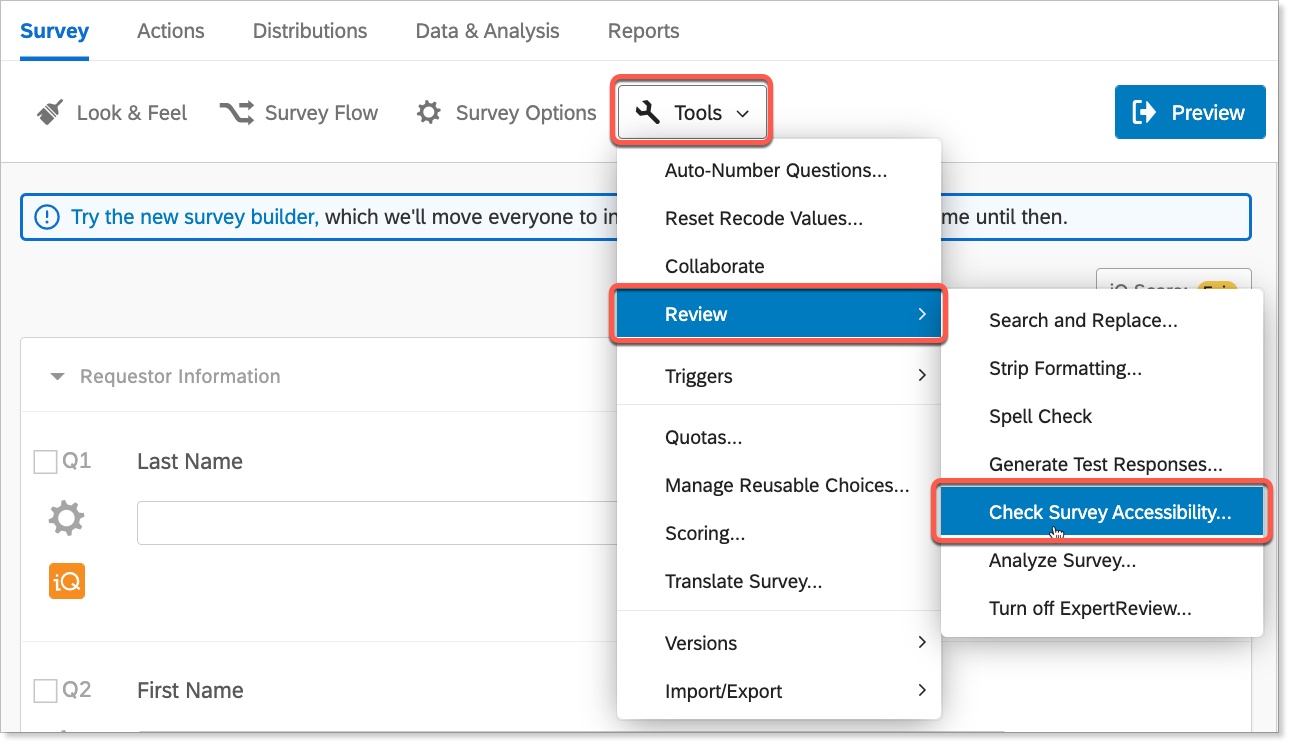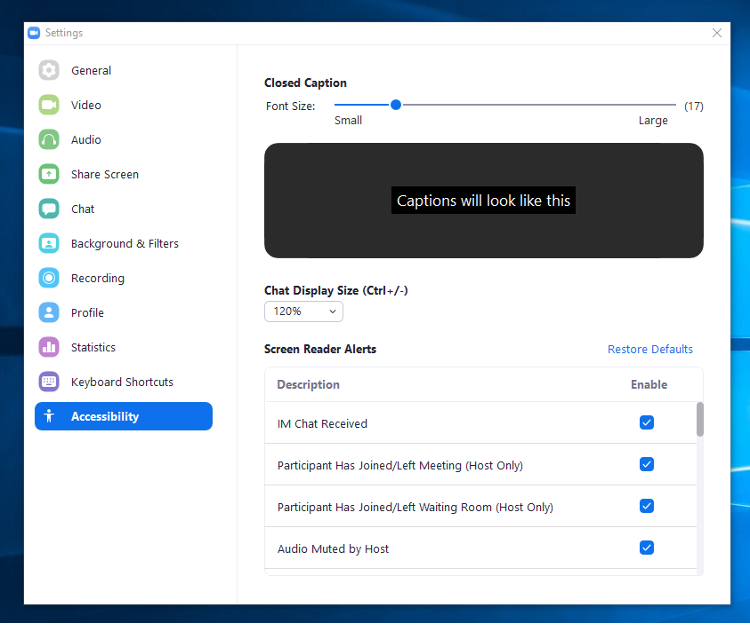Accessibility Features of Instructional Tools
The information below summarizes the accessibility features of instructional technology tools available at CSULB. For questions or assistance, please contact ATS.
Immersive Reader is a versatile tool available in Canvas to support students' unique learning needs and preferences. It's designed to reduce distraction and improve reading and comprehension for individuals of all ages and abilities.
- All of LinkedIn Learning's online video resources are captioned and provide transcripts.
- LinkedIn Learning's website is accessible to screen readers and allows magnification.
Check Survey Accessibility
The "Check Survey Accessibility" feature in Qualtrics identifies questions that are not accessible and gives recommendations to improve survey accessibility. A Qualtrics survey's accessibility depends on a combination of hardware and software, so it's important to use the most recent version of the supported browser types. The Check Survey Accessibility feature is located in the Survey tab under "Tools."
It's important to remember that the Check Survey Accessibility feature does not evaluate whether or not the "look and feel" of a question is accessible. For more details, visit Qualtrics Check Survey Accessibility website.

Accessible Qualtrics Question Types:
Listed below are question types accessible to screen-readers (not all question types are accessible to screen-reading programs):
- Descriptive Text
- Multiple Choice (all types)
- Net Promoter® Score
- Matrix (only Rank Order, Constant Sum, Text Entry, and Profile). Note: If your Matrix Table is set to Mobile Friendly, your question will not be compliant.
- Text Entry (all types)
- Rank Order (only Text Box, Graphic, and Radio Buttons)
- Side by Side
- Constant Sum (only Choices, a.k.a text entry)
- Drill Down
- Timing
- Meta Info
- Captcha Verification (V2)
- File Upload
- Slider
Respondus Lockdown Browser and Monitor enhance online assessment proctoring security and functionality. Visit ATS Respondus for more information about these tools.
- Lockdown Down Browser
Lockdown Browser comes with voice over in the Mac and iPad. Screen reader programs such as Jaws can be used with Windows systems. Visit the Respondus LockDown Browser vendor's website for more accessibility details. - Respondus Monitor
The startup sequence web pages for the Respondus monitor are HTML pages which support assistive technologies such as the screen readers and magnification technologies.
Zoom offers a variety of accessibility features:
Accessibility Settings:
Zoom’s accessibility settings allows the user to customize the font size of the chat, closed captioning, and screen-reader alerts:
Image
- Keyboard Accessibility:
Keyboard shortcuts allow users to manage and navigate the Zoom room with use of the keyboard shortcuts. Learn how to create hot keys and keyboard shortcuts. - Screen Reader Support:
Zoom rooms are fully accessible to the latest versions of available screen readers. - Closed captioning:
Zoom provides closed captioning services. Closed captions allow the host or any of the attendees assigned by the host to add closed captioning in a meeting or a webinar. - Live transcription:
Zoom also provides Al-powered live transcription for all paid accounts. The live transcription feature can be enabled by the host. Live transcription only supports English. To use the live transcription feature host and the attendees should be using Zoom desktop client version 3.5.3 or higher. Visit Zoom for detailed information on closed captioning and live transcriptions.
Multimedia Tools
Video and multimedia make courses more accessible by offering alternative content delivery formats that align with multi-modal and multimedia learning. Video is great for delivering content in more than one “sense” (video + audio), which in turn can augment textual or lecture delivery.
The information below covers accessibility design standards and tips to increase the overall accessibility of your course for three multimedia tools supported by ATS.
- Kaltura is fully integrated into all your courses as “My Media,” which can be accessed by clicking on the "Media" tab in your course navigation.
- Kaltura will automatically caption your videos within a certain time frame as soon as you upload any new videos.
- The captions are fully editable and can be downloaded as transcripts.
More Resources:
- Visit Using Subtitles and Captions for a detailed guide on how to add and edit captions in Canvas.
- View this webinar recording on Meeting Accessibility Requirements with Kaltura
- Visit the Kaltura vendor site on Video Accessibility
- View this demo on Kaltura and Close Captions: Accessibility Features
- Read this research article from the Office of Information Technology at the University of Colorado at Boulder on the accessibility issues with the Kaltura media player and the in-video quiz tool.
- Camtasia has a built-in automatic captioning tool, often referred to as “speech-to-text," to convert audio presentations into captions. It works best by “training” your computer to recognize your voice. Initial testing at ATS reveals that this tool can be very inaccurate and requires a lot of editing, depending on the quality of your microphone and how well Windows learns your voice. More detailed instructions can be found in this article: How to Configure Microsoft Speech Engine for Speech-to-text.
- When working on a Camtasia project, captions can be added manually with the “Captioning Tool.” It’s a fairly robust tool which allows you to specify a duration of video, which then keeps repeating until you’ve had time to type the text. It has default text, line, and font settings that are ADA compliant. Learn how to Manually Add Captions to Video.
- Captions can also be added from a previously-written script and by uploading caption files (SAMI or SRT are the standard formats) created on another platform. More details can be found atTechSmith Help/Captions.




